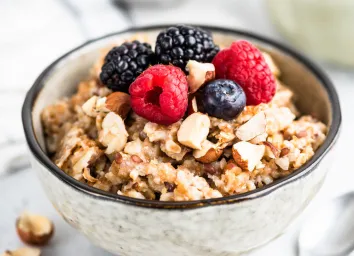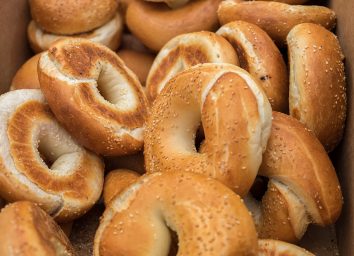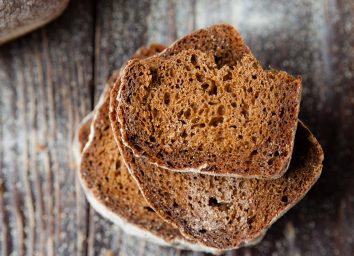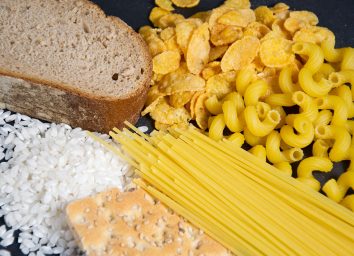8 Ways to Eat Carbs and Still Lose Weight
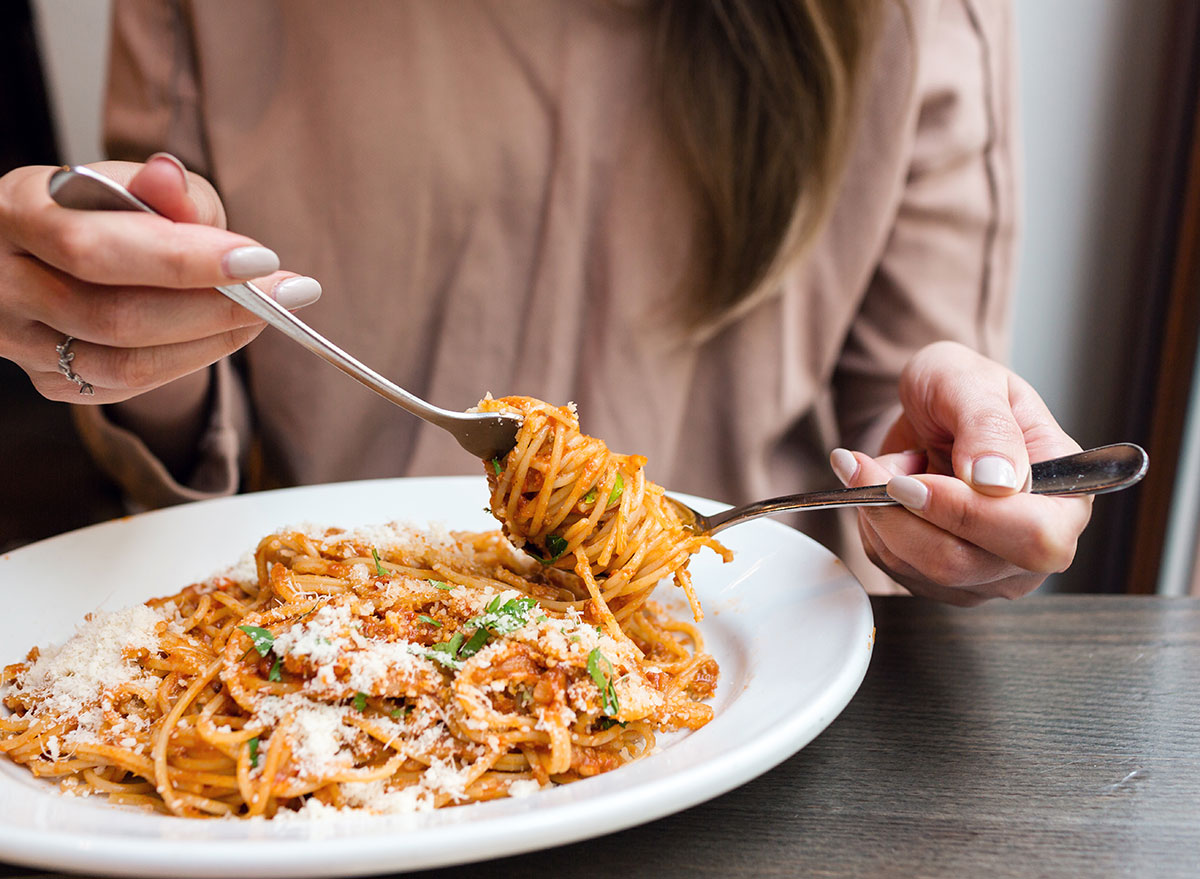
Carbs are not the enemy! It may not seem like it—especially with the rise of popular low-carb diets, like keto—but eating carbs is an important macronutrient in one's overall diet and can help you lose weight. The key is to focus on complex carbohydrates that will make you feel full, instead of simple, refined carbs that will leave you feeling hungrier and hungrier. That's why we put together a list of how to eat carbs and still lose weight.
With these eight strategies in mind, you'll not only be able to not only maintain those weight loss goals, but you'll also put together a few delicious meals along the way. Enjoy pizza? Pasta? A slice of toast in the morning? You can have all of these tasty items on a regular basis. It's all about what you pair those carbs with and the types of grains you choose to consume.
So if you're looking to eat carbs and still lose weight, we have answers for you right here. And for more healthy eating tips, be sure to check out our list of 21 Best Healthy Cooking Hacks of All Time.
Throw on the toppings.

What's the more diet-friendly pizza: plain cheese or supreme? The answer may surprise you. Turns out adding protein to your pizza can actually support your weight loss goals. That's because rounding out a starchy meal with protein can reduce its Glycemic Index (GI), a measure of how quickly blood glucose levels rise in response to food with a measure of one to 100. Studies suggest the lower the score, the better for weight loss.
Complex carbohydrates like whole grains tend to score lower on the scale. But you can further lower a high-carb meal's glycemic load—and feel fuller—by adding protein, which slows down digestion, keeping blood sugar steady. A simple cheese pizza, for example, has a GI of 80, while a fully loaded Supreme pie scores a 36. Adding fat to a meal has the same GI lowering effect, but it also adds far more calories; moreover, a study in The Journal of Nutrition found protein to be 3 times more effective at reducing glucose response than fat. Enjoy your favorite pizza and pasta dishes with lean protein toppings—and stay lean and mean yourself.
Try it yourself with our 32 Best-Ever Healthy Pizza Recipes for Weight Loss.
Add berries.
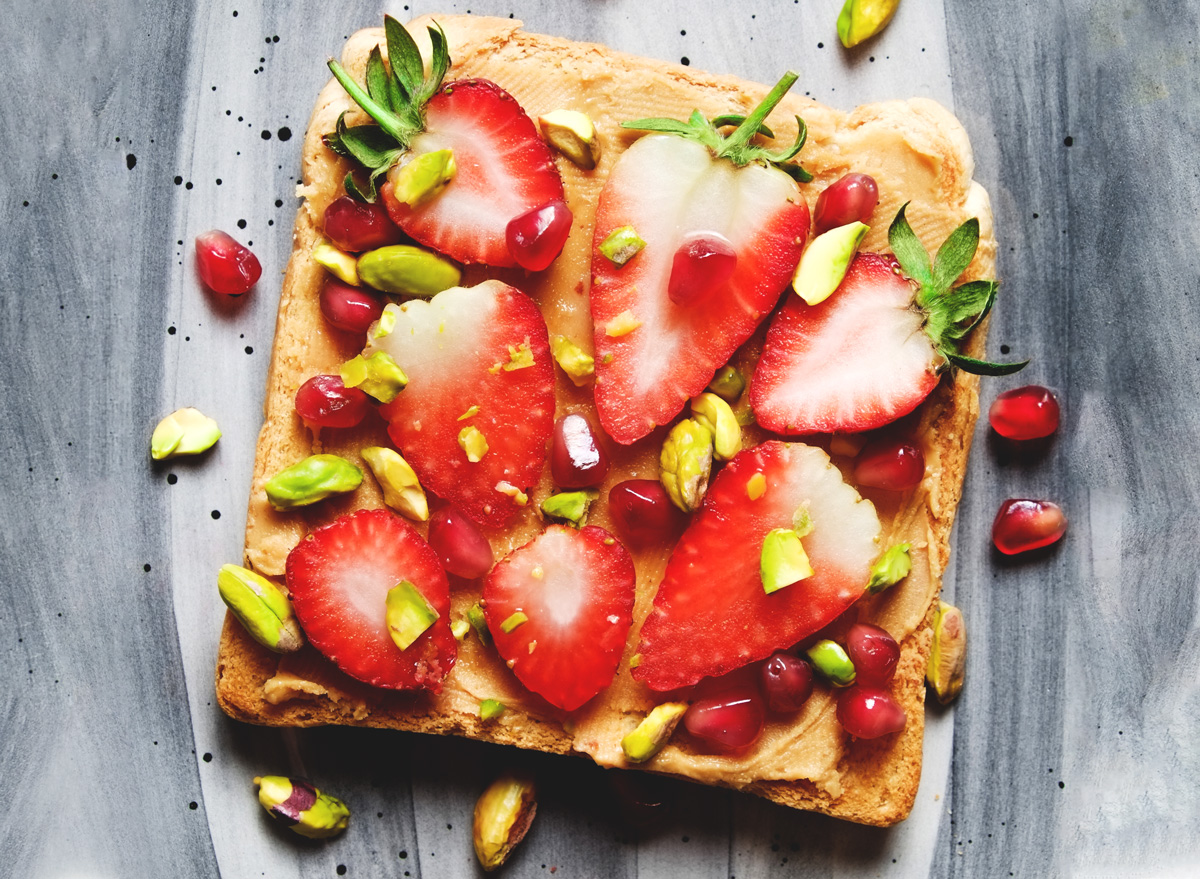
Berry good news: Researchers say berries may slow the digestion and absorption of starch. A study in The Journal of Nutrition found eating 150 grams of strawberries (about a cup) with a 50-gram slice of white bread reduced the insulin response 36% more than the berry-less bread eaters. A mixture of strawberries, bilberries, cranberries, and black currants was even more effective, lowering the glycemic profile of the white bread by 38%. Study authors attribute the results to polyphenols in the berries, and it's good news for you because research suggests a diet containing moderate amounts of low GI carbohydrates is particularly good for weight loss. So, who wants berries?
If you're looking for even more healthy eating tips, be sure to sign up for our newsletter.
Drink green tea with it.
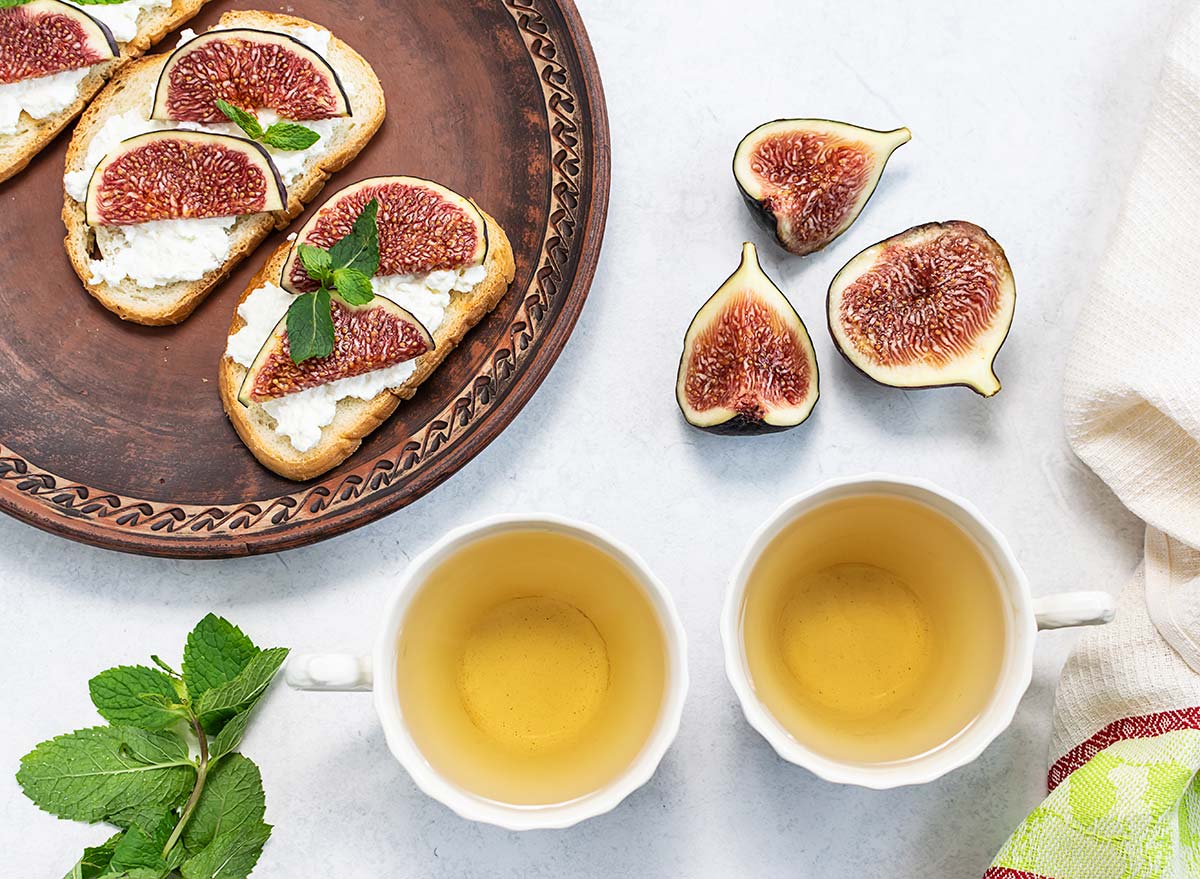
Washing down a high-carb meal with a soothing cup of green tea may be a good diet strategy, according to Penn State scientists. Their study, published in the journal Molecular Nutrition & Food Research, found an antioxidant in green tea called epigallocatechin-3-gallate (EGCG), when combined with carbohydrates, can help regulate hunger hormones and a healthy metabolism by lowering blood glucose. Mice fed EGCG and corn starch had a 50% greater reduction in blood sugar spikes compared to mice that were not fed the compound. The researchers say one and a half cups of green tea is enough to see the same benefits.
Add in some fat.
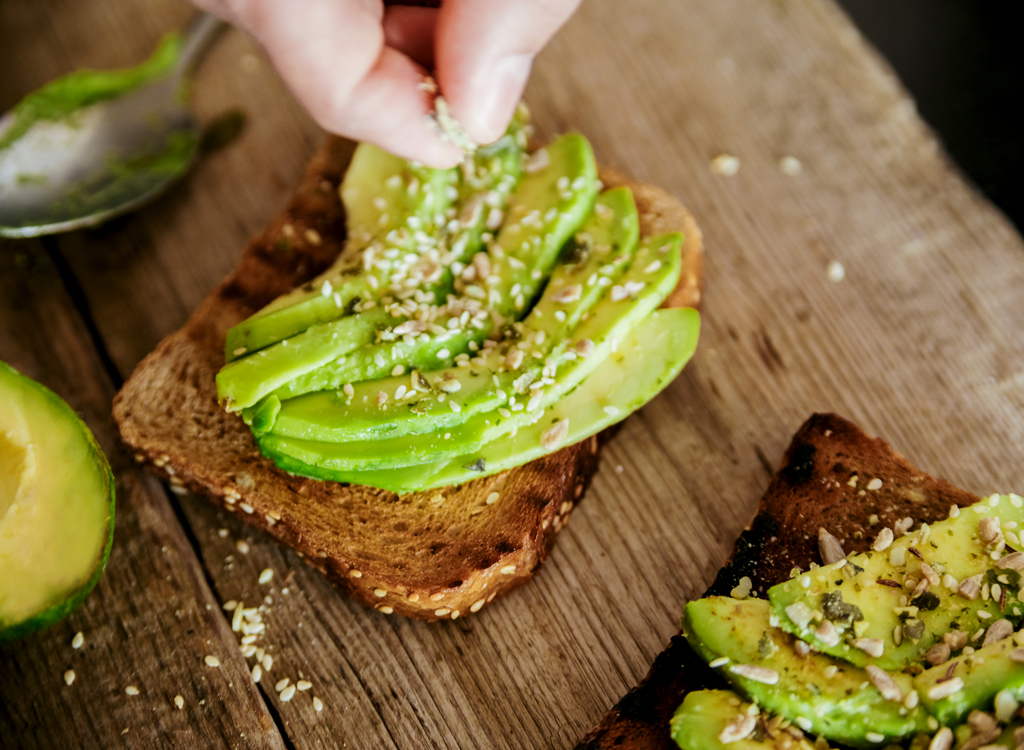
Is butter a carb? No, but we think Regina George would like this tip. Researchers say enjoying your carb-fest with a moderate amount of monounsaturated fat—like the kind you find in olive oil and avocados—can help increase satiety and reduce overall calorie intake. But not just any fat will do.
A study in the journal Nature compared the satiating effects of bread served with olive oil (a monounsaturated fat) and bread served with butter (a saturated fat). Restaurant patrons in the olive oil group ate 23% less bread than the butter group.
And another study published in Nutrition Journal found similar satiating effects from the heart-healthy fat; participants who ate half a fresh avocado with lunch reported a 40% decreased desire to eat for hours afterward.
Eat it, don't drink it.
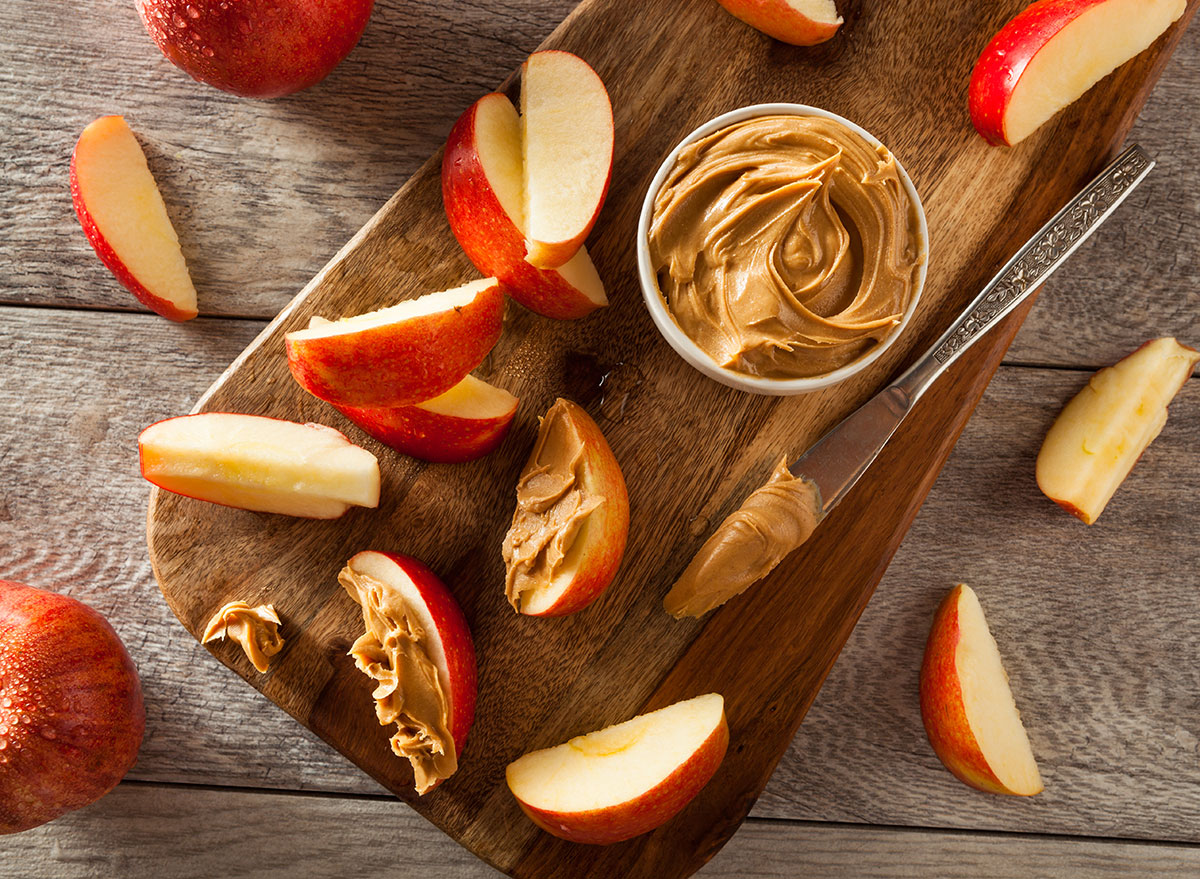
You'll slash carbohydrates from your diet by choosing a fresh apple over an apple muffin, but you won't entirely erase the carb count. Believe it or not, all fruits and vegetables include some carbs. In fact, one apple has 34 grams of carbs—more than you'll find in two slices of whole wheat bread! And because juicing removes the satiating fiber from whole fruits, a cup of fruit juice can do more harm than good.
Researchers at the Harvard School of Public Health found that people who consumed one or more servings of fruit juice each day increased their risk of developing type 2 diabetes by as much as 21%. And a second study in the journal Nature found liquid carbohydrates to be 17% less filling compared with solid carbohydrates. As a general rule: eat, don't drink, your fruits.
Try it yourself with one of our 25 Delicious Apple Recipes.
Wait until dinner time.
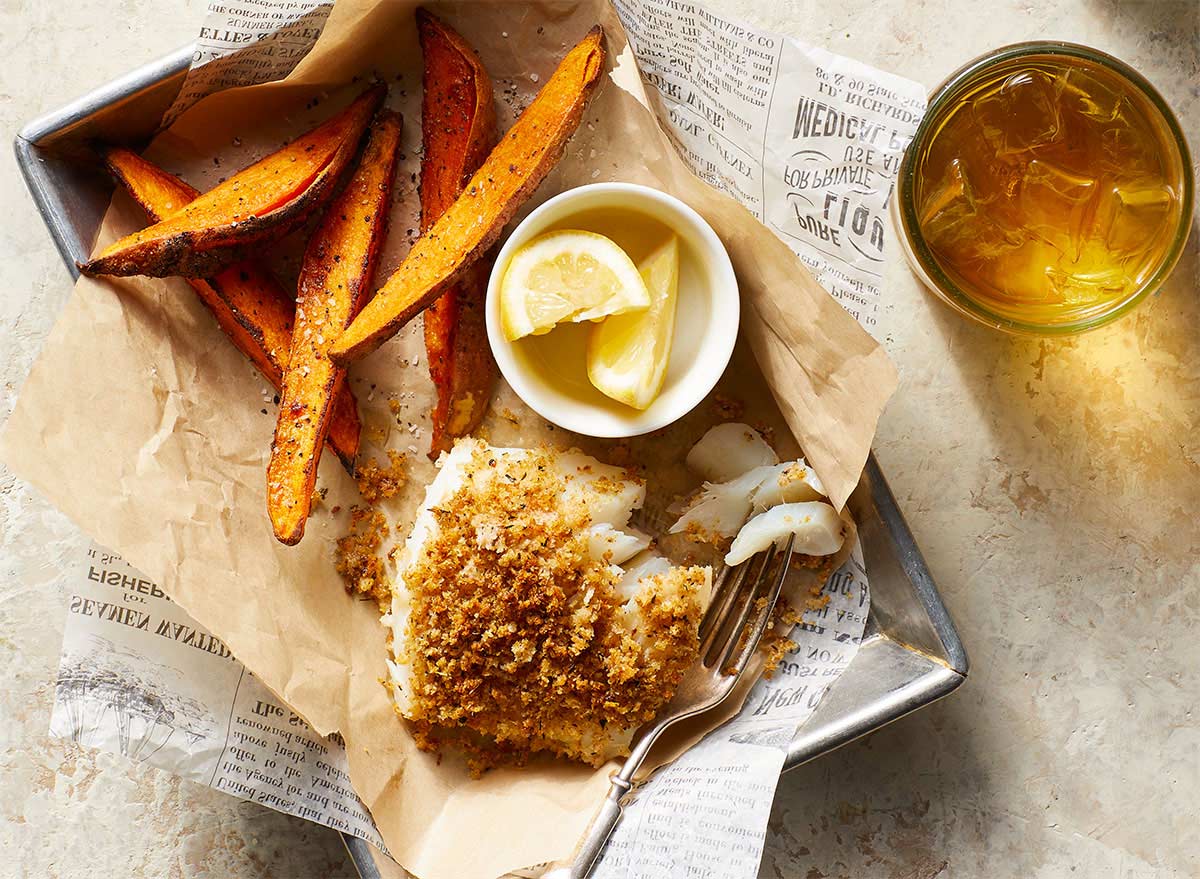
The dietary boogeyman, nighttime carbs, has a frightening reputation among people trying to lose weight. But there's actually a growing body of research to suggest breaking your "carb curfew" can actually help your diet goals.
One study in the journal Obesity put two groups of men on an identical weight loss diet. Half the group ate their carbs throughout the day; the other half ate the majority of the meal plan's carbs in the evening. The result? The nighttime carb eaters lost 27% more body fat—and felt 13.7% fuller—than those on the standard diet. Moreover, inflammation markers in the nighttime group level decreased by 27.8% compared to only 5.8% in the standard dieters.
On the flip side, recent research has increased weight loss with linked low-carb, high-protein breakfasts. Consider swapping your morning bagel for an omelet and add a potato to your evening meal.
Choose resistant starches.
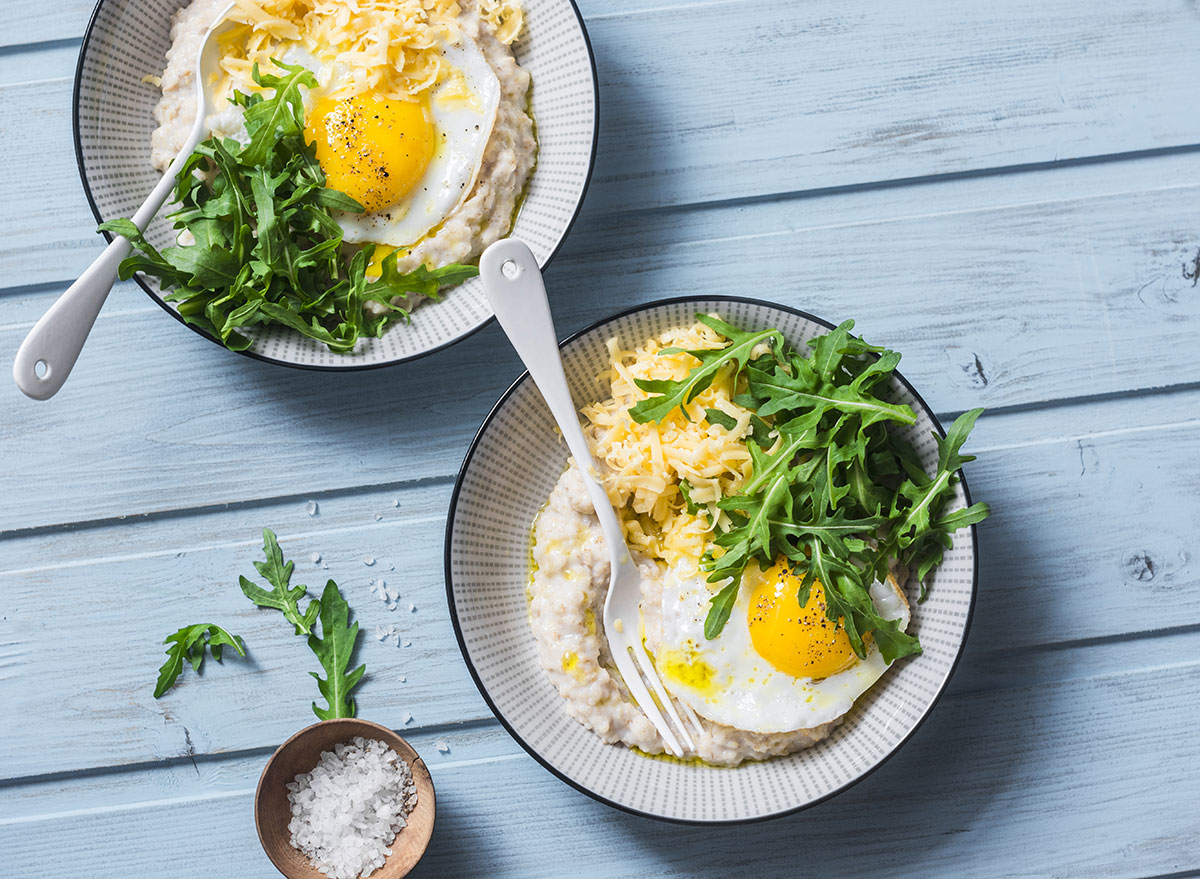
Strange but true: You can gain less weight from a serving of pasta simply by putting it in the fridge. The drop in temperature changes the nature of the noodles into something called "resistant starch," meaning your body has to work harder to digest it. Cold pasta is closer in structure to natural resistant starches like lentils, peas, beans, and oatmeal, which pass through the small intestine intact, keeping you fuller, longer.
One study found that including resistant starch (brown beans) with an evening meal increased satiety hormones by 51% and suppressed hunger hormones by 15%, as compared to a meal that included a simple carbohydrate (white bread). You don't have to resist carbs, just opt for the resistant ones! Especially The #1 Best Carb To Eat If You're Trying to Lose Weight.
Work out first.

Breaking a sweat before you break-your-fast could get you into your skinny jeans faster. Why? According to some studies, exercising in a fasted state—in other words, before breakfast—can burn almost 20% more fat compared to exercising with fuel in the tank.
Why? Once you consume calories, insulin levels rise, which, according to researchers, can suppress fat metabolism by up to 22%. Have a bowl of cereal, a Gatorade, or even a small cafe au lait, and your workout goes towards burning off that glycogen. But with nothing in your tank, the burn comes primarily from body fat.
Just make sure to avoid these 15 Exercise Mistakes That Are Ruining Your Workout.
